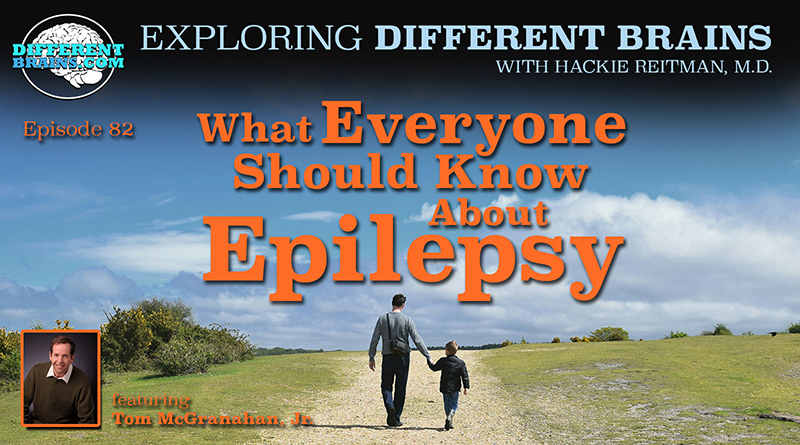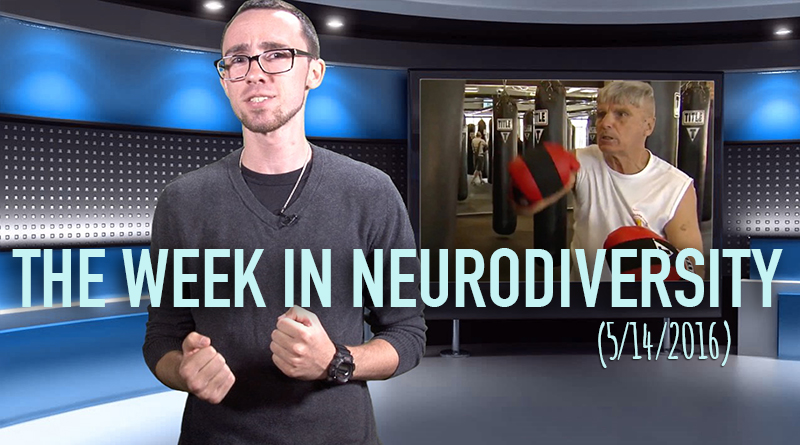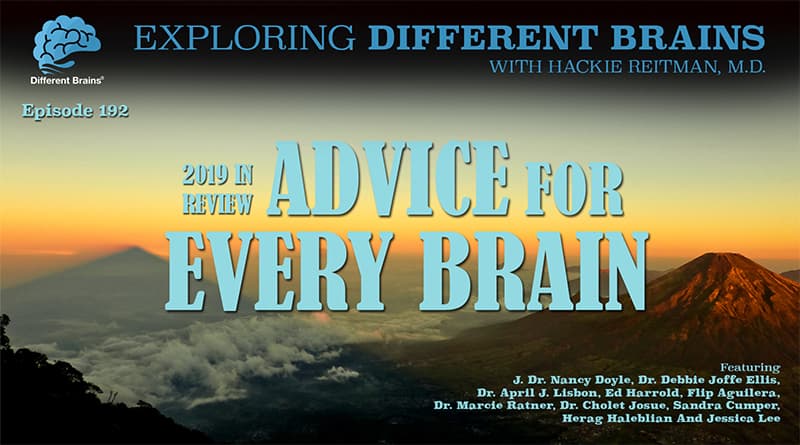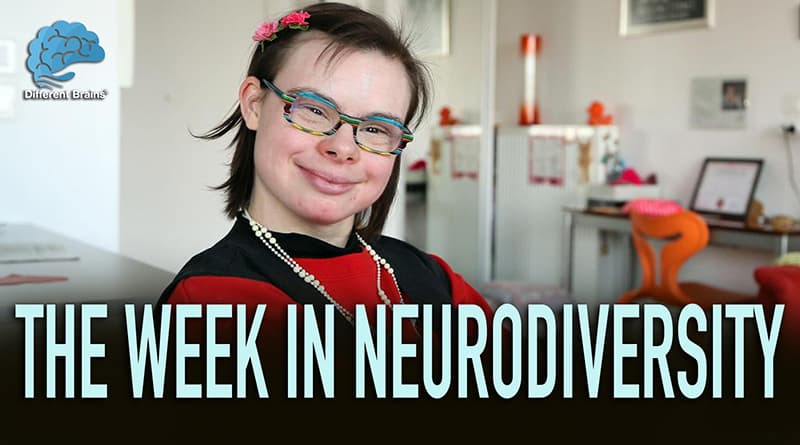
What Everyone Should Know About Epilepsy, with Tom McGranahan, Jr. | EDB 82
(17 mins) In this episode, Hackie Reitman, M.D. continues his conversation with Tom McGranahan, Jr. Tom has epilepsy, and is a tireless advocate for awareness of the condition. He is also the author of Under Siege: Epilepsy in the Open. Tom discusses common misconceptions about epilepsy, tools for people dealing with seizures, and the importance of societal awareness for the condition.
For more about Tom and his book, visit: epilepsyintheopen.com
You can buy his book on Amazon here.
Tom is also a blogger for Different Brains. Check out his articles here.
.
41 Second Preview:
.
To listen or download the podcast version of this episode, see the embedded player below.
Or look for us on your favorite podcast provider:
iTunes | Stitcher | SoundCloud
[expand title=”View Full Transcript”]
HACKIE REITMAN, M.D. (HR): Hi, I’m Dr. Hackie Reitman, welcome to another episode of Exploring Different Brains. And today, we have the pleasure of speaking again with one of the nation’s leading epilepsy advocates, who himself has epilepsy, the author of “Under Siege: Epilepsy in the Open,” Tom McGranahan. Tom, welcome to Exploring Different Brains again! Thank you so much for being here!
TOM MCGRANAHAN, JR. (TM): You’re welcome, thank you for having me be apart of it.
HR: What’s the biggest single thing you want to tell people with epilepsy, or parents of children with epilepsy, or anybody who’s watching this or listening to this or reading this? What do you want them to know?
TM: I want them to know the main thing we have control over is our attitude. We don’t have control over our surroundings, our family, our body, we have control over our attitude. You must keep the positive attitude. Specifically, we live better than any other people ever lived in this planet. How many people had medicines for their epilepsy generations ago? No one. We have so much going for us, so many people more knowledgeable. The medical field’s way ahead, society of course is behind. It’s normal. But there’s so much plus to life. Stay positive, keep your best, and do your best. Don’t let epilepsy’s fear take you over.
HR: What are some of the biggest myths, the biggest fallacies–like you go and speak all around the country in one of the best known advocates for epilepsy, your book “Under Siege: Epilepsy in the Open,” is really a terrific work. What you say in the foreword is: “The complete control of one’s consciousness is a priceless treasure and I, like most every kid, had more or less taken mine for granted. But after epilepsy exploded into my life, that 100% control of my consciousness was taken away.” Can you expound upon that?
TM: It’s very humbling. It makes you realize you really don’t have the last say in the matter. It can be taken away from you, and you won’t be here. It is just so humbling, but at the same time, it makes you realize to have faith. Not to let the fears get to you. Stay strong, smile, and thank the lord for another day. I don’t try to get too religious, excuse me. But it’s something that is an important factor. I went to a seminary for two and a half years. Then decided no, I wanted to get married. Didn’t want to be a priest. Found out later my dad went to a seminary. I didn’t know that ahead of time, I’m so glad he didn’t become a priest. And then I have three aunts who are nuns. I come from an Irish, Roman Catholic background. And so I think more God, and is something that when you come close to dying, you better appreciate your gift of life. And I’m sure everybody does. One thing I’ve heard people say is nobody speaks to Jesus until the day they die. And I say, “Jesus, Jesus,” at the last minute. But the gift of life, just getting up and seeing the sunshine and being able to walk and get around is a treasure. It is an absolute treasure. But sadly some people get so caught up in their everyday life, they don’t see that which I can understand. If I didn’t have epilepsy, I’d be thinking just like them. “Who won the game last night? What’s the latest on the weather” and so forth and so on.
HR: What are some of the fallacies and myths that you feel strongly about that our audience should know about?
TM: First off, don’t put anything in anybody’s mouth when they’re having a seizure. I talked to a gentleman who’s a college professor who was telling that to me one time. I had to help straighten him out on it. Someone has a seizure, it’s just a short circuit. My body runs on electricity, so let him have the seizure. Just help him down, let them have their short circuit, can’t stop it. Only if the short circuit continues on longer than three, four, five minutes, then call an ambulance. Now a day it costs $500 for an ambulance ride. And if you have epilepsy, you’re very likely unemployed for that much money. And that’s very, very costly. And if you see somebody have a seizure, keep calm, they’re just like you. Not any different. Let them wake up, and let them go on with their lives. Don’t get fearful about it.
HR: Well as an MD, who does not have great knowledge of this stuff as I’m an orthopedic surgeon by training, I would disagree with the first one with–I would say call for help right away, because I would rather be out some money than have guessed wrong on what was wrong with the individual but that’s just my opinion. And I understand what you’re saying. It amazes me in writing the book Aspertools how as I learn more about neurodiversity, whether it’s bipolar, epilepsy, Alzheimer’s, autism, Asperger’s, misophonia, which I had no idea what it was until we interviewed Jennifer Jo Brout–which is when sounds, not only you’re hypersensitive to them but body sounds like chewing and breathing, light up your amygdala and you want to do something. You know what I mean? But with all of these different things, it amazes me, like you just off the top of your head said some of the tools that you use, which are help not only every kind of different brain, but every kind of different body, heart, longevity, health, which is–well you want to eat a good diet, you want to get regular exercise, you want to get enough sleep, you want to get rid of your stress. Whether the way you get rid of your stress is through spirituality or however you do it, you have to have faith–I mean all of these things. What are some of the more specific tools you might give our audience, those of us in the audience who might have a seizure disorder, tools they might really use?
TM: The main tool they could use is their attitude. What I mean by that is the doctors will do fantastic jobs, same with the medicines to help with the physically, control the seizures and the bodies and the functions of the body. But your attitude decides your fate. Either wake up with a smile, need to move ahead, and have some goals set up. Decide, “Okay, I’m going to finish college, I’m going to take this field or that field,” and work for yourselves. Think confidence. Be positive of yourself. When people find out you have epilepsy, they walk away from you. I found out the secret is bring it up this way, instead of saying “I have epilepsy,” tell them that you know somebody that has epilepsy. You’re not lying. You’re telling the truth, you know somebody that has epilepsy. That way they’ll speak to you. They’ll go, “Oh my goodness,” they’ll open up and talk. People are so, so scared of epilepsy. Why? Because I’ve had different thoughts on it. I even put that in the book about, like you shared, we keep control of our body. We only lose control when we die. That’s the only time you lose control so to speak, when you die. So people see somebody losing control, it makes them think of the end. I don’t know. Getting the feedback. But don’t tell anybody you have epilepsy. Just talk about it. And the new millennial generation is better understanding since they’ve been better taught what to do if somebody has one. They play it down like what’s the big deal. But a whole generation still in the background with no information, and no education, so what could be expected?
HR: Well that’s what we’re trying to change here at Different Brains too. Just as you are as well. I would like the President of the United States to wear a t-shirt that says “My Brain Is Different.” Like so what, it works different. Whether someone has OCD or ADHD or Asperger’s or whatever, as a society we should give people the help they need to maximize their independence, their productivity, their happiness. But we’ve got to get rid of this stigma that, “oh my goodness, we really can’t talk about this. We can’t come out of the closet so to speak, and say ‘hey, I have epilepsy, I have Asperger’s, or I have bipolar, or I am bipolar or I have schizophrenia. Keep an eye on me while I’m working here and doing a good job and everything.'” And be positive. That I would applaud you for because the positive nature of choices you make is your choice to make. In epilepsy, which is easy for us, like myself who does not have epilepsy–I have other issues, but not epilepsy–to not be able to empathize with that loss of control you describe so eloquently. You’re just not in control. And it’s tough. It’s tough.
TM: Yes, it is. But you gotta’ laugh at it. You gotta’ laugh at it. You can’t let it bother you. What good is it going to do if you get bothered by it.
HR: Yep.
TM: I’ve got the one funny one I have to share with you about the time my wife–this happened when we were together at the apartment complex. Third floor apartment. I carried her up three flights of stairs, we got married. Put her down, couldn’t find my keys. Had to go outside, “What do I do? What the heck do I do?” I went up, climbing up the balconies in a white tuxedo to get back in there, open up the door, and carry her through the door again. I didn’t count the months, but I think it was over a year later. It was a Friday night. I got home like at four or so. I said, “I better straighten up a little bit,” you know, “clean up this and that. She’ll be home by five, blah, blah, blah.” So I go do that, I go take a shower. And I’m coming out of the shower and I end up closing the door. All of the sudden, I look. The door was brown. I go, “What is brown?” I close it, all of the sudden I wake up. I locked myself out of my apartment naked. On the third floor apartment around 4:30 in the afternoon. I just had a seizure. I ran downstairs to hide in the laundry room. I said, “Tom, do that. Do that.” I go downstairs to do that, and the door’s locked. For the first time ever. We’ve been there five years and the door’s locked. Anyhow, I looked out quickly, went outside. And I remembered climbing out that balcony before. So I climb up the balcony. I got back upstairs. My wife asked me, “What’s going on? What happened?” She came home, she could tell I was kind of upset. I told her what happened. She goes, “Why didn’t you call me?” And I had a good line. I was quiet for a second, then I said, “You know, you’re right. I should have jogged down to the 7-Eleven, bummed a quarter, and given you a call.” This is back in the 90s. That’s when there wasn’t cell phones like that. Anyway, I look at the irony of that. Being the best dressed I’d ever been to being the least dressed I’d ever been, that’s the only two times I’ve climbed up those balconies. Point being, you’ve gotta’ look at life and smile at it. You gotta’ laugh at it, you gotta’ move with it. And you can’t let it get you down. I know some people can’t help that. Like you said, different brains, different chemicals, different things happen. Our brains will get our depressions, our attitudes can get so impacted by different factors of life. But again, I’ll say the exercising. You ain’t gotta’ be an athlete, doing the exercising helps you get out some of that energy. Helps you feel better, helps your body get better. If I wasn’t a god athlete, I couldn’t have survived all those falls I took.
HR: Tell our audience some of the most important things–I know you’ve recited a lot of them already, but is there, in this book for those in our audience who want to buy “Under Siege: Epilepsy in the Open,” what will they find in this book in your voice?
TM: Well one of the nice things about it is there’s 65 quotes in it. About 35-40 of them are from well-known sources like the World Health Organization, National Council on Aging, and Parade Magazine, Time Magazine, defining what epilepsy is about. For example, a lot of people get epilepsy when they get older. Why? The human body, as we all know, will get older, starts to get old and can’t function as it used to. That’s why more people will get epilepsy because the brain is now not in high-gear, and scar-tissue time changes and electricity flow cannot normally go through it. That’s what will cause the epilepsy. And the main reason I wrote the book was informational book and also inspirational. Informational because nobody knows what epilepsy is. They just have the fears of them being possessed by the devil, the movies, the commercialization of it, epilepsy. It was like, “oh, they’re possessed. They are ceased, they don’t have any control of themselves.” It’s such a demeaning aspect. But it’s not. They’re still the same person, that’s just one part of a physical aspect that’s not working properly. It’s not a broken leg, it’s not a broken finger, it’s not all kinds of–there’s so many variations of people’s health, it’s just one of the many variations. And I could go on and on I suppose, excuse me, but I like keeping it simple. Epilepsy is just neurological aspect to how the body functions. It’s not a big deal. Just try to get yourself in shape and go with it. Play it down, let fear take you.
HR: How can people find out more about you, Tom?
TM: I wish I knew, I really do.
HR: Can they look you up online?
TM: Yes, I’m sorry. I got a website called Epilepsy in the Open. That’s my little website, I got somebody helping me do it. And there’s more websites like epilepsy.com. That’s the biggest one in the nation now. Epilepsy Foundation of America is involved with them too. And it’s something that will give you all the round places of it, and will give you more websites to go to check into it more so. Epilepsy is not hard to understand. It’s not hard to understand at all. The hard part of it is not the physical part of it as much as the social-economical community wise. It’s something that, it’s hard to describe to various person to person as it is. But epilepsy’s main problem is–I think I put this in the book. When I was a smaller kid, people would give me a hard time. When I became the big guy, people were nice to me. Well I’m still the same person. My body’s bigger. When I started having seizures, nobody said anything. I said, “Oh, these are older people, they understand it better. They know it better.” No, they didn’t want me to smack them. That’s why they didn’t make fun of me. I went, “Ah, ha!” Earlier they did it because they knew I couldn’t smack them and hurt them. They’d make fun of me. But I got bigger, they’d realize they’d better not do this, this guy might come back at us. We find things out as we get older, we find things out in depth. Epilepsy can happen to anybody. The main thing is don’t let it worry you.
HR: Well, that wraps up another episode of Exploring Different Brains. We’ve had the pleasure of speaking to Tom McGranahan, the author of “Under Siege: Epilepsy in the Open,” the epilepsy advocate, the man who walks the walk as well as talks the talk. Thank you so much for being with us here at Different Brains.
TM: My pleasure, thank you very much, Hackie.
[/expand]
This video is owned by Different Brains Inc, kindly donated by it’s original producer PCE Media LLC.
Different Brains® Inc. founder Harold “Hackie” Reitman, M.D. is an author, filmmaker, retired orthopedic surgeon, former professional heavyweight boxer, the past chairman and president (and current board member) of The Boys and Girls Clubs of Broward County, and a neurodiversity advocate. However, it was his role as a father that led to the creation of the DifferentBrains.org website.
Hackie’s daughter Rebecca grew up with epilepsy, 23 vascular brains tumors, and underwent 2 brain surgeries before the age of 5. Her struggles and recovery put him on the road to, through 26 professional heavyweight boxing matches, raising money for children’s charities (to which he donated every fight purse).
Rebecca eventually went on to graduate from Georgia Tech with a degree in Discrete Mathematics, and Dr. Reitman wrote and produced a film based on her experiences there (The Square Root of 2, starring Darby Stanchfield of ABC’s Scandal). After graduation, Rebecca received a diagnosis of Asperger’s syndrome. Hackie, shocked at his own ignorance of the topic despite being an M.D., embarked on years of research that culminated with his book Aspertools: The Practical Guide for Understanding and Embracing Asperger’s, Autism Spectrum Disorders, and Neurodiversity (released by HCI books, publishers of the Chicken Soup for the Soul series).
This experience revealed to Hackie the interconnectedness of the conditions that fall under the neurodiversity umbrella, while alerting him to the in-fighting and fractured relations that often plague the organizations tasked with serving the community. Convinced that overcoming these schisms could help all of society, Hackie forged the Different Brains philosophy of inclusive advocacy: “Supporting Neurodiversity – From Autism to Alzheimer’s and All Brains In Between”.
In the company’s initial years of operation, Hackie self-financed all of the content on DifferentBrains.org, all of which offered free to view to the public. Currently he is the host of our weekly interview show Exploring Different Brains, writes blogs for the site, and tours the country speaking at conferences, conventions and private functions, all with the goal of improving the lives of neurodiverse individuals and their families, and maximizing the potential of those with different brains. Separate from Different Brains, Hackie is the founder and CEO of PCE Media, a media production company focusing on reality based content. He recently co-executive produced the documentary “Foreman”, the definitive feature documentary on legendary boxer and pitchman George Foreman.




